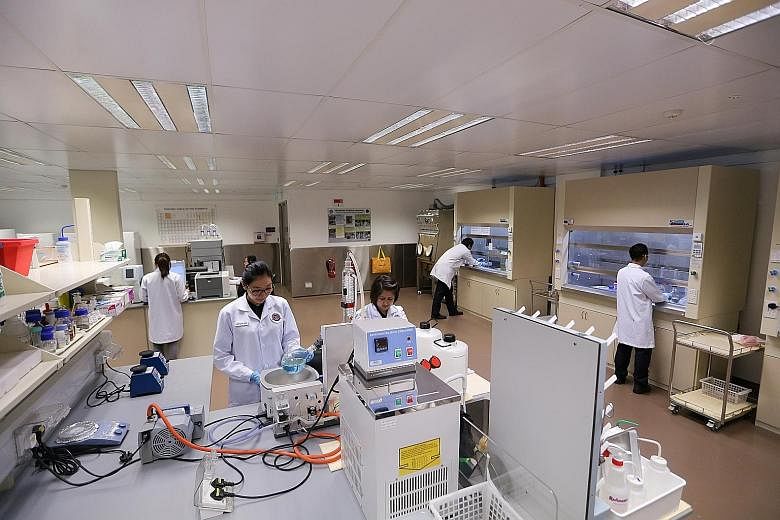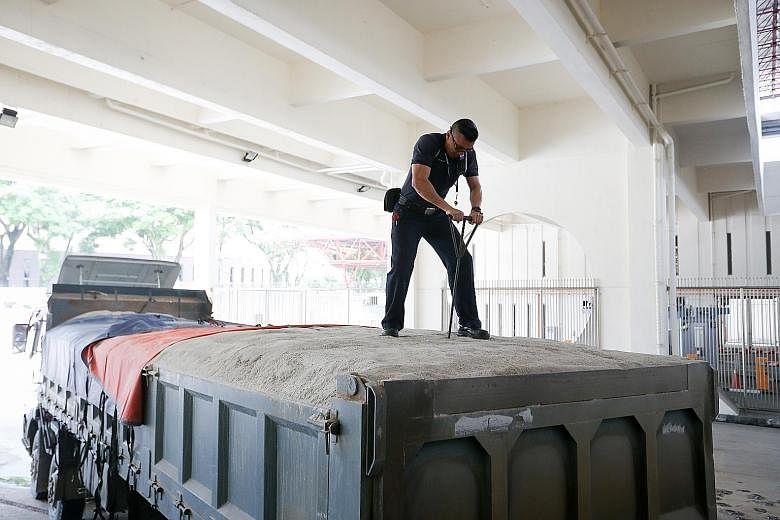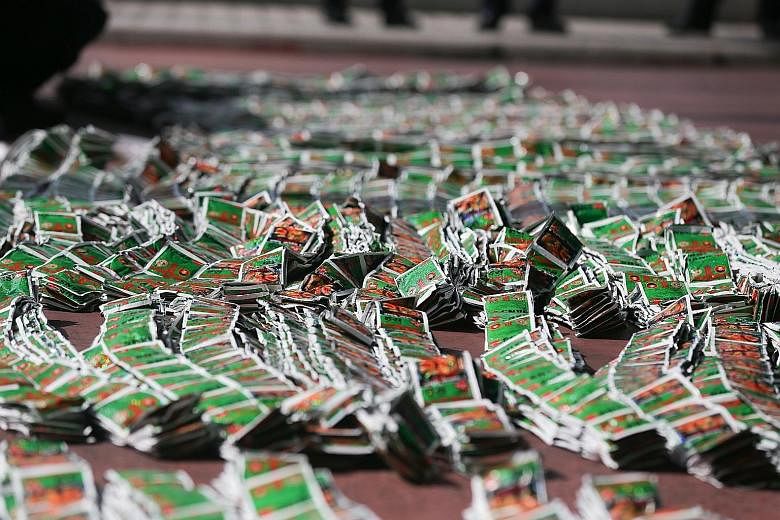The number of smuggling cases detected among cargo vehicles at the Woodlands and Tuas checkpoints fell by around a quarter last year, latest figures reveal.
There were 990 cases of contraband and prohibited items, including drugs and cigarettes, down from about 1,290 in 2014, or a 23 per cent fall .
More than 1.8 million cargo vehicles, such as lorries, crossed the two land checkpoints in both directions, making them among the busiest land crossings in the world.
-
Lab takes one to three hours to do analysis
-
The Immigration and Checkpoints Authority (ICA) has labs set up at both land checkpoints to test for hazardous chemical, biological, radiological and explosive agents in cargo vehicles.
Yesterday, ICA opened the doors of its chemistry lab, part of the Woodlands Analytical Laboratory, to the media for the first time. The $2.9 million chemistry lab, believed to be the first of its kind in the world, opened in 2013. More labs are being planned for other checkpoints, such as the ports.
Normally, sending a sample for analysis to another agency would take at least half a day but it takes between one and three hours for the lab to do the job.
Officers have access to equipment such as a handheld Sabre5000 system which can detect trace amounts of explosives, chemical warfare agents, toxic industrial chemicals or narcotics in about 20 seconds.
On average, more than 70 lorries are screened a day at each land checkpoint. ICA has trained more than 160 officers as "security sensitive materials specialists" to conduct checks.
Superintendent Tan Kong Hui, deputy commander of ground operations at Woodlands Checkpoint, said: "It's quite common to see 60-footers (lorries). It poses a challenge to us because you can have 30 different kinds of goods in a lorry, you can't possibly (unpack) each and every box to check.
"For unconventional threats, we are worried about what we can't see, what officers cannot use their hands or eyes to find."
Lim Yi Han
The Immigration and Checkpoints Authority (ICA), which released the figures, is expecting a higher than usual number of cargo vehicles in the lead-up to Chinese New Year. On average, about 5,000 cross the checkpoints every day.
"Despite stringent checks, smuggling attempts have not ceased. Checks are therefore critical and necessary," Superintendent Tan Kong Hui, deputy commander of ground operations at Woodlands Checkpoint, said yesterday.
"We will see an increase towards this Chinese New Year period. We will respond accordingly to the security climate (and) will maintain a certain level of checks on all types of vehicles."
Yesterday, more than 1,000 cartons of contraband cigarettes, and about 19,000 sachets of chewing tobacco were seized at Woodlands Checkpoint from two Malaysia-registered vehicles.
The seized items, vehicles and the two Malaysian drivers, aged 18 and 41, were handed over to Singapore Customs for investigations.
Meanwhile, the ICA and Agri-Food and Veterinary Authority have advised travellers who plan to bring in festive goods or food from overseas to check guidelines before doing so. For example, they are allowed to bring in a maximum of 5kg of seafood or meat products from approved sources.



